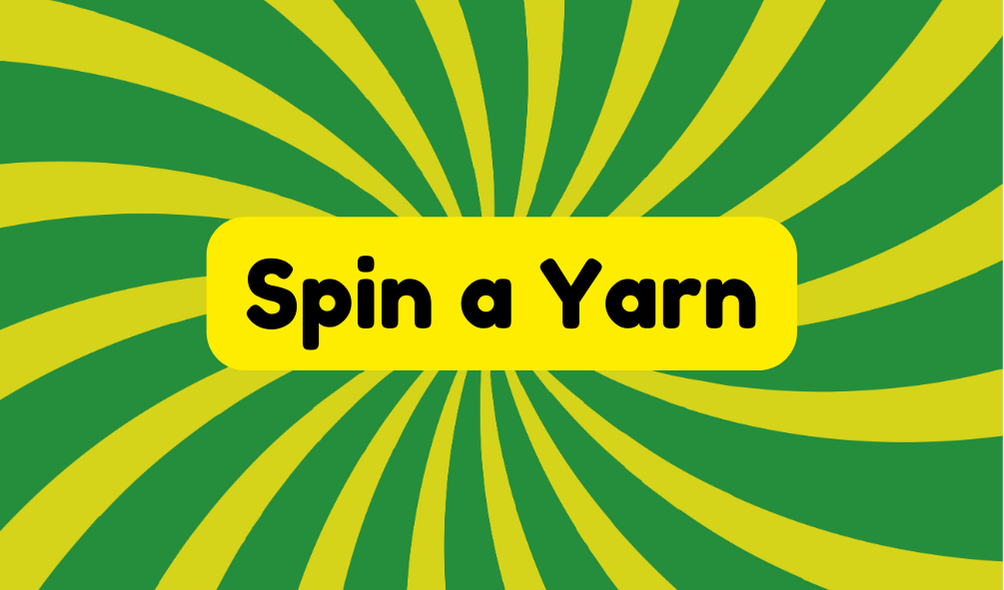"Spin a yarn" refers to the practice of storytelling, often involving imaginative embellishments and creativity. This phrase has its roots in maritime traditions from the early 19th century and reflects sailors' habit of sharing exaggerated tales. While spinning yarns captivates audiences, it raises questions about authenticity versus fantasy. This storytelling art remains significant today, connecting generations and enhancing communication beyond mere facts. Understanding its nuances can deepen appreciation of both narratives and their underlying truths.
Synonyms
When exploring the term "spin a yarn," one can find various synonyms that capture the essence of this storytelling practice. These alternatives highlight diverse storytelling techniques and narrative styles, enriching a narrative's texture. Some fitting synonyms include:
- Weave a tale
- Fabricate a story
- Tell a tall tale
- Share a fable
Each of these options illustrates a commitment to creativity while often embodying a sense of exaggeration. While these terms can evoke vivid imagery, they may also provoke skepticism about the authenticity of the tales they represent, questioning the fine line between enchanting storytelling and mere fantasy.
Example of Sentences
The phrase "spin a yarn" often conjures images of enthralling tales spun from imagination, showcasing the art of storytelling. Each narrative intricately weaves together details that captivate audiences. Consider how some might:
- Present an extraordinary quest that defies belief.
- Utilize storytelling techniques to enhance the emotional landscape.
- Include creative embellishment that transforms mundane events into riveting experiences.
- End a tale with a moral lesson, challenging listeners' perceptions.
While these stories can entertain, skepticism often arises regarding their truths. Therefore, discerning the balance between imaginative narrative and reality remains essential for anyone embracing the timeless craft of storytelling.
Origin
Originating from nautical traditions, the phrase "spin a yarn" has its roots in the early 19th century, where it reflected the storytelling practices of sailors. In maritime culture, yarn spun from fibers had a dual significance, symbolizing both the physical act of yarn-making and the art of storytelling. This expression embodies a rich storytelling heritage, particularly among fishermen and sailors who would share exaggerated tales to entertain and bond during long voyages. While this idiom continues to thrive, it invites listeners to question the authenticity of embellished narratives, highlighting the fine line between imaginative storytelling and mere fabrication.
Collocations
Collocations relating to the phrase "spin a yarn" emphasize its narrative qualities and context. These expressions showcase the art of storytelling and often bring with them an air of skepticism regarding authenticity. Imagery arises from vibrant combinations such as:
- Exaggerated tales told around the fire
- Children captivated by whimsical narratives
- Skilled orators mastering storytelling techniques
- Intricate narrative embellishment on historical events
Each phrase highlights the complex relationship between fact and fiction. While these collocations celebrate creativity in storytelling, they also invite a critical view of the tales, encouraging listeners to discern the truth hidden within elaborate, spun yarns.
How to Use in Everyday Language
In conversations about storytelling, the phrase "spin a yarn" can be effectively woven into everyday language to evoke images of elaborate and imaginative tales. This idiom captures the essence of storytelling techniques that often involve creative embellishment.
| Story Elements | Narrative Style | Emotional Impact |
|---|---|---|
| Characters | Dramatic | Evokes empathy |
| Plot Twists | Whimsical | Sparks curiosity |
| Descriptions | Lyrical | Creates imagery |
| Themes | Universal | Invokes reflection |
Why Is It Still Relevant Today?
The practice of spinning a yarn continues to hold significance in today's society, where storytelling remains a valued form of communication. The storytelling importance lies in its ability to connect generations and preserve cultural heritage. In an age dominated by technology, the traditional narratives foster relationships and engage listeners beyond mere facts. However, it is essential to scrutinize the authenticity of these tales, as embellishments can distort truth. While entertaining, spun yarns can sometimes shape perceptions inaccurately. Understanding their role in culture encourages critical thinking about narratives, prompting individuals to appreciate authenticity while still enjoying the art of storytelling.







